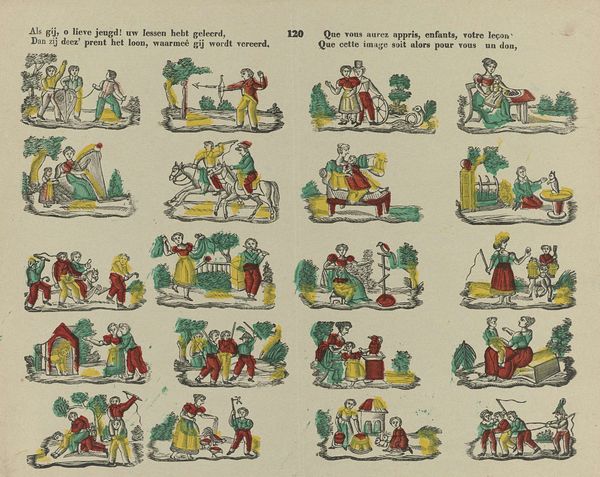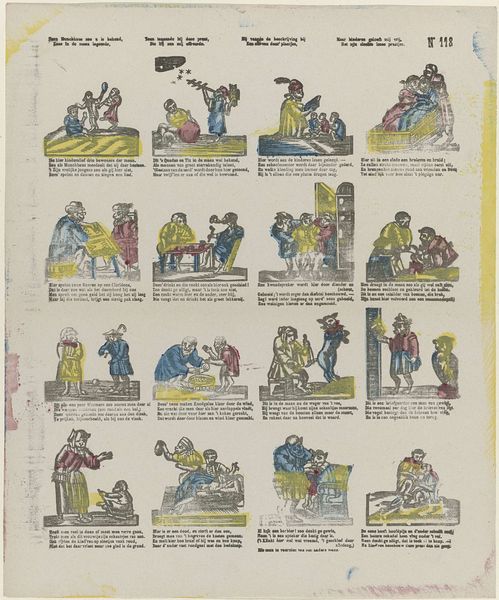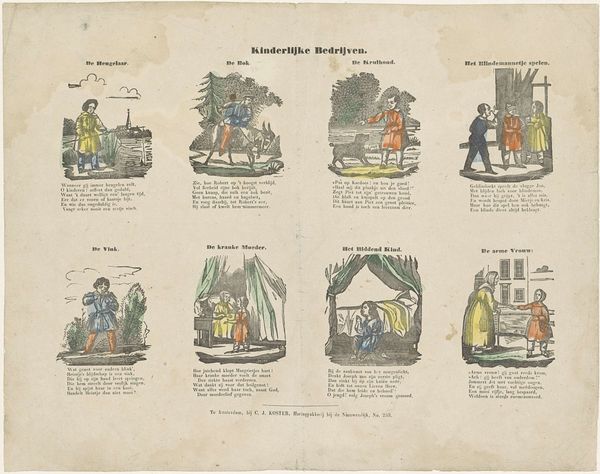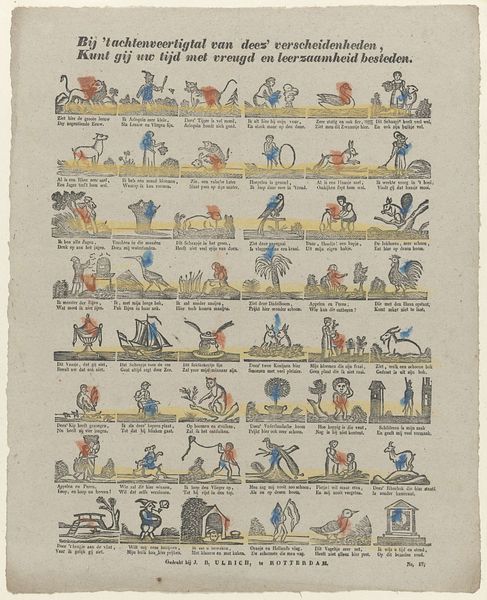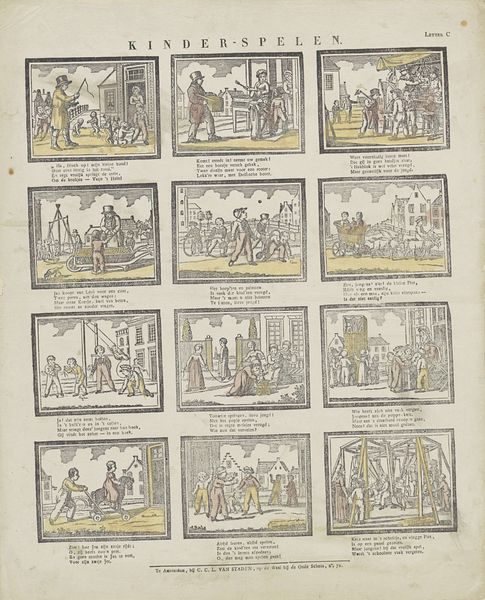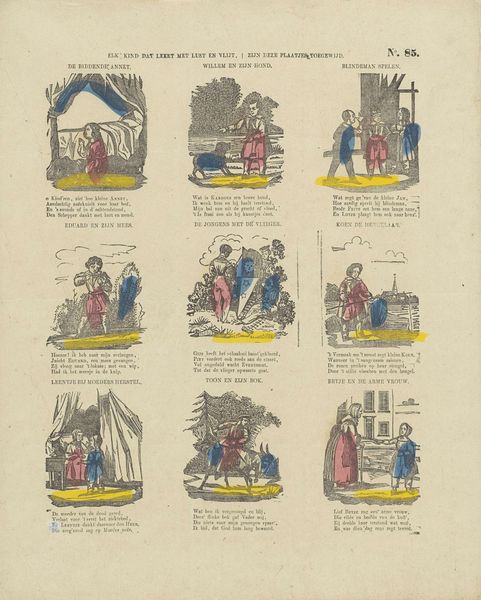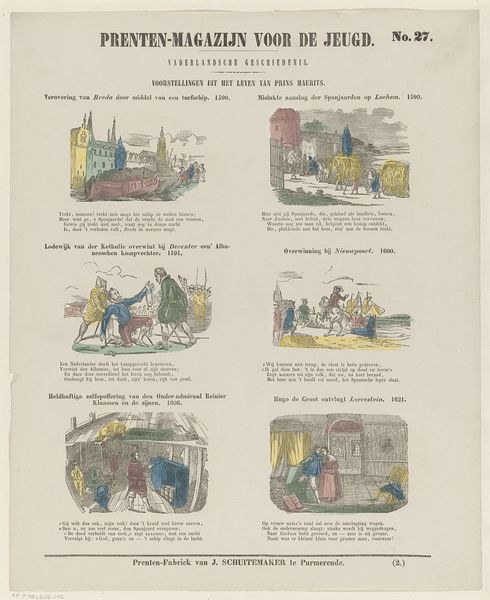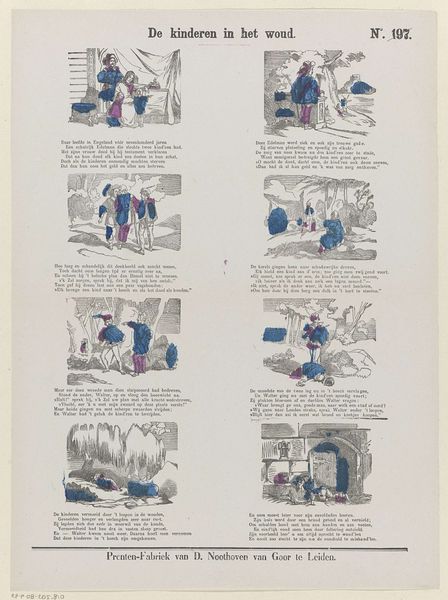![Nog een prent die de jeugd, / Zoo ik hoop weer verheugd [(...)] by Jacob Plügger](/_next/image?url=https%3A%2F%2Fd2w8kbdekdi1gv.cloudfront.net%2FeyJidWNrZXQiOiAiYXJ0ZXJhLWltYWdlcy1idWNrZXQiLCAia2V5IjogImFydHdvcmtzLzQ4MTZhNjljLTQ3MTUtNDZkYy04Mzk4LTYwMGE5N2I3MTAwMi80ODE2YTY5Yy00NzE1LTQ2ZGMtODM5OC02MDBhOTdiNzEwMDJfZnVsbC5qcGciLCAiZWRpdHMiOiB7InJlc2l6ZSI6IHsid2lkdGgiOiAxOTIwLCAiaGVpZ2h0IjogMTkyMCwgImZpdCI6ICJpbnNpZGUifX19&w=3840&q=75)
Nog een prent die de jeugd, / Zoo ik hoop weer verheugd [(...)] 1850 - 1870
0:00
0:00
print, etching
#
comic strip sketch
# print
#
etching
#
comic
#
genre-painting
Dimensions: height 318 mm, width 390 mm
Copyright: Rijks Museum: Open Domain
Curator: Here we have a print entitled, "Nog een prent die de jeugd, / Zoo ik hoop weer verheugd," created sometime between 1850 and 1870 by Jacob Plügger. It’s currently held in the Rijksmuseum. Editor: My initial impression is whimsy. It’s laid out like a page from a children’s book, or maybe a simple comic strip. I'm struck by the limited color palette, almost like a hand-tinted engraving. Curator: Indeed. As a genre painting rendered as a print, it circulated widely, likely in children’s primers or affordable periodicals. Notice how Plügger uses etching to delineate the scenes. The text accompanying each vignette suggests simple moral lessons for youthful viewers. Editor: The etching process speaks to its mass-producible nature. Think about the labor involved in creating the plates, printing them, and then the added touch of hand-coloring—likely employing an assembly line. It's a fascinating interplay between mechanized production and individualized craft. Curator: Absolutely. The choice to depict children at play reflects the period’s emerging understanding of childhood as a distinct stage of life deserving attention and cultivation, reflecting broader social values on education and familial roles. Editor: I also see how this object collapses the separation between high art and ephemera. It challenges our contemporary tendency to elevate “fine art” above more quotidian forms of visual communication. The production, materials, and intended audience point to a more democratic understanding of art. Curator: Examining the artwork within its original context, it highlights shifts in both printing technology and pedagogical approaches. Art becoming a tool for socialization and instruction is an evolving public role for visual media that gains strength throughout the 19th century. Editor: Right, and in bringing together these two lines of inquiry—the art's social function and its method of production—we gain a really grounded, complete sense of the artwork. Curator: Precisely, and it underlines the intricate ways images circulate and acquire significance within a specific cultural landscape.
Comments
No comments
Be the first to comment and join the conversation on the ultimate creative platform.
